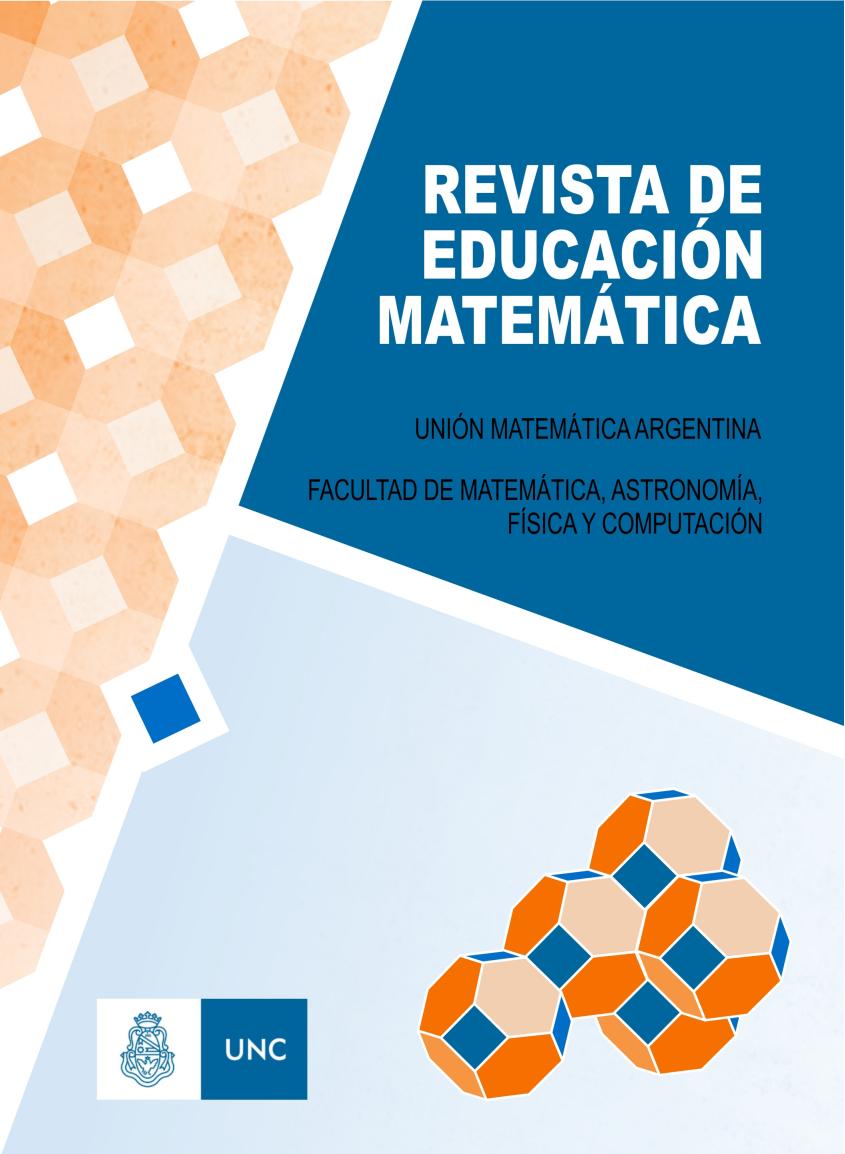Tessellating the plane with convex polygons
DOI:
https://doi.org/10.33044/revem.37469Keywords:
Tilings, Plane, convex polygons, regular polygonsAbstract
In this article we give a panoramic view over the classification of tilings of the euclidean plane by using copies of a single convex polygon (convex monohedral tilings). First, we show that a tiling with regular poligons is only possible by using triangles, squares and regular hexagons, a fact well known by the ancient greeks, and that if the polygon is not convex then there are infinite possible tilings. In this way, we focus on convex tilings withnon-regular polygons. First, we show that any triangle or quadrilateral tiles the plane. Then, we show that a polygon that tiles the plane must have at most 6 edges. Next, we consider the case of hexagons and show that there are only 3 different families of convex hexagons tiling the plane. Finally, we deal with pentagons, whose classification is more involved, and could be completed recently in 2017. We will show that there are 15 different families of pentagons tiling the plane.
Downloads
References
Bagina, O. (2004). Tiling the plane with congruent equilateral convex pentagons. J. Combin. Theory. Ser. A,105, 221-232.
Euler, L. (1758). lementa doctrinae solidorum. Novi Commentarii AcademiaeScientiarum Petropolitanae, 109-140.
Gardner, M. (1975). Mathematical Games. Scientific American,233(1), 112-119.
Grünbaum, B., y Shephard, G. C. (1977). The eighty-one types of isohedral tilings in the plane. Math. Proc. Cambridge Philos. Soc.,82(2), 177-196.
Hirschhorn, M. (1976). The 1976 Summer Science School. Tessellations with convex equilateral pentagons. Parabola,13, 2-5.
Hirschhorn, M. (1977). More tessellations with convex equilateral pentagons. Parabola,13, 20-22.
Hirschhorn, M., y Hunt, D. (1985). Equilateral Convex Pentagons Which Tile the Plane. J. Combin. Theory Ser. A,39, 1-18.
Kershner, R. B. (1968). On paving the plane.American Mathematical Monthly,75,839-844.Kershner, R. B. (1969). On paving the plane.APL Technical Digest,75(8), 4-10.
Klaassen, B. (2016). Rotationally symmetric tilings with convex pentagons andhexagons. Elemente der Mathematik,71(4), 137-144.
Mann, C., McLoud-Mann, J., y Von Derau, D. (2015). Convex pentagons thatadmiti-block transitive tilings. Geometriae Dedicata,194, 141-167.
Niven, I. (1978). Convex polygons that cannot tile the plane.Amer. Math. Monthly,85(4), 785-792.
Rao, M. (2017). Exhaustive search of convex pentagons which tile the plane. arXiv:1708.00274..
Reinhardt, K. (1918). Uber die Zerlegung der Ebene in Polygone. Dissertation, Universität Frankfurt.
Schattschneider, D. (1978). Tiling the plane with congruent pentagons. Mathematics Magazine, 51, 29-44.
Stein, R. (1985). A new pentagon tiler. Mathematics Magazine, 58, 308.
Downloads
Published
Issue
Section
License

This work is licensed under a Creative Commons Attribution-ShareAlike 4.0 International License.
Aquellos autores/as que tengan publicaciones con esta revista, aceptan los términos siguientes:
- Los autores/as conservarán sus derechos de autor y garantizarán a la revista el derecho de primera publicación de su obra, el cuál estará simultáneamente sujeto a la Atribución-CompartirIgual 4.0 Internacional (CC BY-SA 4.0), que permite:
- Compartir — copiar y redistribuir el material en cualquier medio o formato
- Adaptar — remezclar, transformar y construir a partir del material
- La licenciante no puede revocar estas libertades en tanto usted siga los términos de la licencia
- Los autores/as podrán adoptar otros acuerdos de licencia no exclusiva de distribución de la versión de la obra publicada (p. ej.: depositarla en un archivo telemático institucional o publicarla en un volumen monográfico) siempre que se indique la publicación inicial en esta revista.
- Se permite y recomienda a los autores/as difundir su obra a través de Internet (p. ej.: en archivos telemáticos institucionales o en su página web) después del proceso de publicación, lo cual puede producir intercambios interesantes y aumentar las citas de la obra publicada. (Véase El efecto del acceso abierto).









